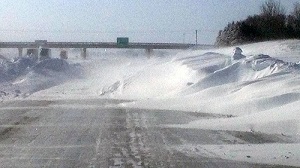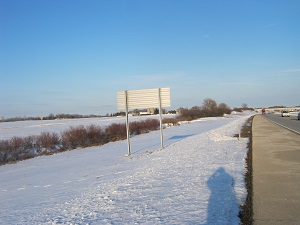 Drifting and blowing snow can cause major problems for highways and drivers. Drifts can refreeze on pavements to form dangerous conditions for vehicles and accumulate to make the road impassable. Blowing snow can cause dangerous visibility issues, including whiteouts. To improve safety, it is vital to mitigate drifting and blowing snow as much as possible.
Drifting and blowing snow can cause major problems for highways and drivers. Drifts can refreeze on pavements to form dangerous conditions for vehicles and accumulate to make the road impassable. Blowing snow can cause dangerous visibility issues, including whiteouts. To improve safety, it is vital to mitigate drifting and blowing snow as much as possible.
What is living snow fence?
Living snow fences are naturally occurring or designed plantings of trees and/or shrubs and native grasses along highways, roads and ditches. These living barriers create a vegetative buffer that traps and controls blowing and drifting snow, piling it up before it reaches a road, waterway, farmstead or community. These strategically placed fences have also been shown to reduce highway maintenance costs associated with drifting and blowing snow.

WisDOT has traditionally planted rows of trees and shrubs as living snow fence. Living snow fence has several advantages over commercial wood slat or polyethylene snow fences. It is less expensive, does not have to be installed and taken down annually, is almost maintenance-free once established, and is more visually appealing.


What are the benefits of living snow fence?
- Prevents snow drifts that can cause crashes and result in stranded motorists.
- Improves driver visibility.
- Reduces roadway maintenance costs by reducing plow time and salt usage.
- Lessens environmental impact with less salt use, fewer truck trips and less fuel consumption.
- Reduces shipping delays for goods and services.
- Increases crop yields by adding moisture to the soil from snow melt.
- Controls soil erosion and reduces spring flooding.
- Promotes pollinators.
- Serves as visual cues to guide drivers along the road.
For more information
Living snow fence in other states
VIDEO: Snow drift control presentation and living snow fence demonstration